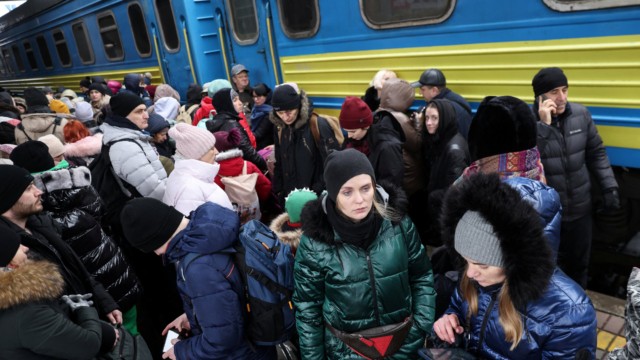Russia is increasingly targeting rail infrastructure in its war on Ukraine. The Ukrainian railway has become one of its most important logistics tools — and a symbol of resistance

Ukrainian railways (Ukrzaliznytsia), is being pushed to breaking point having moved over 12 million refugees. It is thought 6.5 million have moved to the safer west part of Ukraine. Further an estimated 5.7 million travelled on to neighbouring countries of Poland, Romania, Moldova, Hungary and Slovakia. Ukraine’s rail network was modernised 10 years ago for the 2012 UEFA football championship. This is in contrast to its poor road infrastructure. As a show of solidarity, the leaders of Slovenia, Poland and the Czech republic travelled by train to Kiev on 15th March. Since then it has brought more important visitors to Kyiv. This includes the US Secretary of State, Antony Blinken and the EU Commission president Ursula von der Leyen.
Rail links to Russia and Belarus have been disabled. A Russian blockade has closed key ports in the South on the Black sea. Freight trains carrying grain and coal for steel production are now being rerouted to Western Europe. However this is a mammoth task due to a change in rail gauge at Ukraine’s western borders at Poland, Romania, Hungary and Slovakia, A new link via the restored Smilnytsia border crossing will shortly increase capacity to Poland .
Oleksandr Kamyshin. the 37 year old chairman, brought in last year to reform Ukrainian Railways is now masterminding this huge refugee exodus. This has come at huge cost with 140 railwaymen killed and 120 injured. There is the constant threat of the Russians bombing the tracks. Many stations have been attacked, including the eastern city of Kramatorsk. Here at least 50 people died when it was bombed on April 8th. In particular, provincial stations, electrical substations, and rail bridges are targets of Russian missiles. Apart from keeping refugees moving, the the railway also deliver tonnes of aid to embattled areas of the country. Otherwise it transports troops to frontline cities, and exports whatever Ukraine can produce in these wartime conditions.
Some good news, north of Kyiv, the bombed bridge over the river Irpin has been replaced by a new structure. This has enabled links from Kyiv to Bucha and Borodyanka to be restored. These towns were formerly occupied by Russian troops.
Nevertheless, this does not bode well for the rail network in the rest of Ukraine. The change in Russia’s war aims means it no longer needs these railway connections for any advance of its own. Because Russia has not succeeded in capturing the Ukrainian rail network, it now intends to destroy it. This is primarily to cut off Western arms shipments to the front. How long Ukraine is able to maintain its rail infrastructure will probably be a deciding factor in this war.
